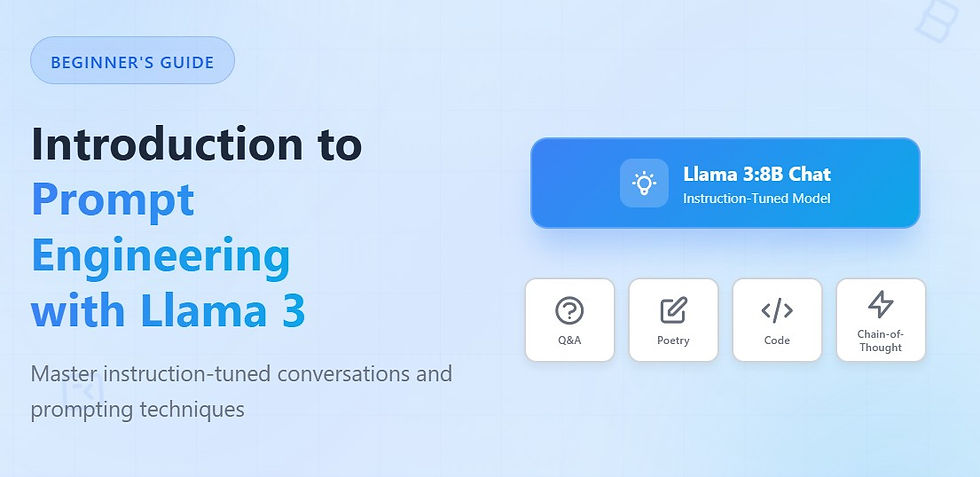Numerical Methods Exploration: Gauss Elimination, Jacobi, and Seidel
- Pushkar Nandgaonkar
- May 3, 2024
- 3 min read
Introduction
Welcome to this new blog. In this post, we’re going to discuss a new project requirement which is "Numerical Methods Exploration: Gauss Elimination, Jacobi, and Seidel". This project aims to explore numerical methods for solving systems of linear equations, focusing on Gauss elimination with and without pivoting for 2x2 systems, as well as iterative methods like Gauss Jacobi and Gauss Seidel for 3x3 systems. The implementation addresses stability, precision, and convergence criteria, offering insights into the practical application of these techniques.
We'll walk you through the project requirements, highlighting the tasks at hand. Then, in the solution approach section, we'll delve into what we will accomplish, discussing the techniques we will apply.
Let's get started!
Project Requirement
Q1) Write a code to perform Gauss elimination with and without pivoting for a 2 x 2 system, taking the number of significant digits (d) to be considered as user input. Using the code, solve the 2 x 2 system with random coefficients for d = 3, 4, 5 and 6. Display the results in a tabular form. (5)
Q2) Write a code to perform (5) a) Gauss Jacobi method
b) Gauss Seidel method for a 3 x 3 system by checking the convergence criteria using a suitable norm. Test the method on a random 3 x 3 system, which is diagonally dominant and check your results. A comparison between the two methods should be presented in tabular form. The stopping criteria could be taken as the low est iteration number when the relative percentage error is less than 1%.
Generate a random matrix of size 3 x 3 which cannot be made diagonally dominant and check if the iterates converge. The random entries generated should be of the form n.dddd
Solution approach
In this project, we aimed to address two main questions: Gauss elimination and iterative methods like Gauss Jacobi and Gauss Seidel.
Question 1. Gauss Elimination:
We started by implementing Gauss elimination both with and without pivoting for a 2x2 system. For the implementation with pivoting, we ensured that we handle cases where zero diagonal elements might occur. This is crucial for stability in the solution process. We provided an interactive way for users to input the number of significant digits (d), allowing for flexibility in precision.
Question 2. Iterative Methods - Gauss Jacobi and Gauss Seidel:
Moving on to iterative methods, we implemented both Gauss Jacobi and Gauss Seidel methods for a 3x3 system. These methods are particularly useful for large systems of equations. We ensured convergence by checking the relative percentage error and stopping when it falls below a certain threshold. We also demonstrated the importance of convergence criteria by testing the methods on both diagonally dominant and non-diagonally dominant random matrices.
Once we complete the implementation of the Gauss elimination and iterative methods, our next crucial step will be to thoroughly analyze the output and validate the solutions. We will conduct a comprehensive examination of the results obtained from each method, taking into account factors such as accuracy, efficiency, and convergence. Employing statistical measures and visualization techniques, we will assess the performance of our implementations and compare them against expected outcomes.
Output Analysis and Validation
In the output analysis section, we will present a detailed evaluation of the solutions obtained from the Gauss elimination and iterative methods. This will involve examining the correctness of the computed solutions, analyzing the convergence behavior of iterative methods, and identifying any potential challenges encountered during the solution process. Additionally, we will provide insights into the practical implications of our findings and discuss how they can be applied to real-world scenarios.
Through rigorous validation procedures, we will ensure the reliability and effectiveness of our implemented methods. By scrutinizing the output data and validating against known solutions or theoretical expectations, we will establish confidence in the accuracy of our numerical techniques. This rigorous validation process will enhance the credibility of our solutions and underscore our commitment to delivering high-quality results to our clients.
If you require any assistance with the project discussed in this blog, or if you find yourself in need of similar support for other projects, please don't hesitate to reach out to us. Our team can be contacted at any time via email at contact@codersarts.com.




Comments